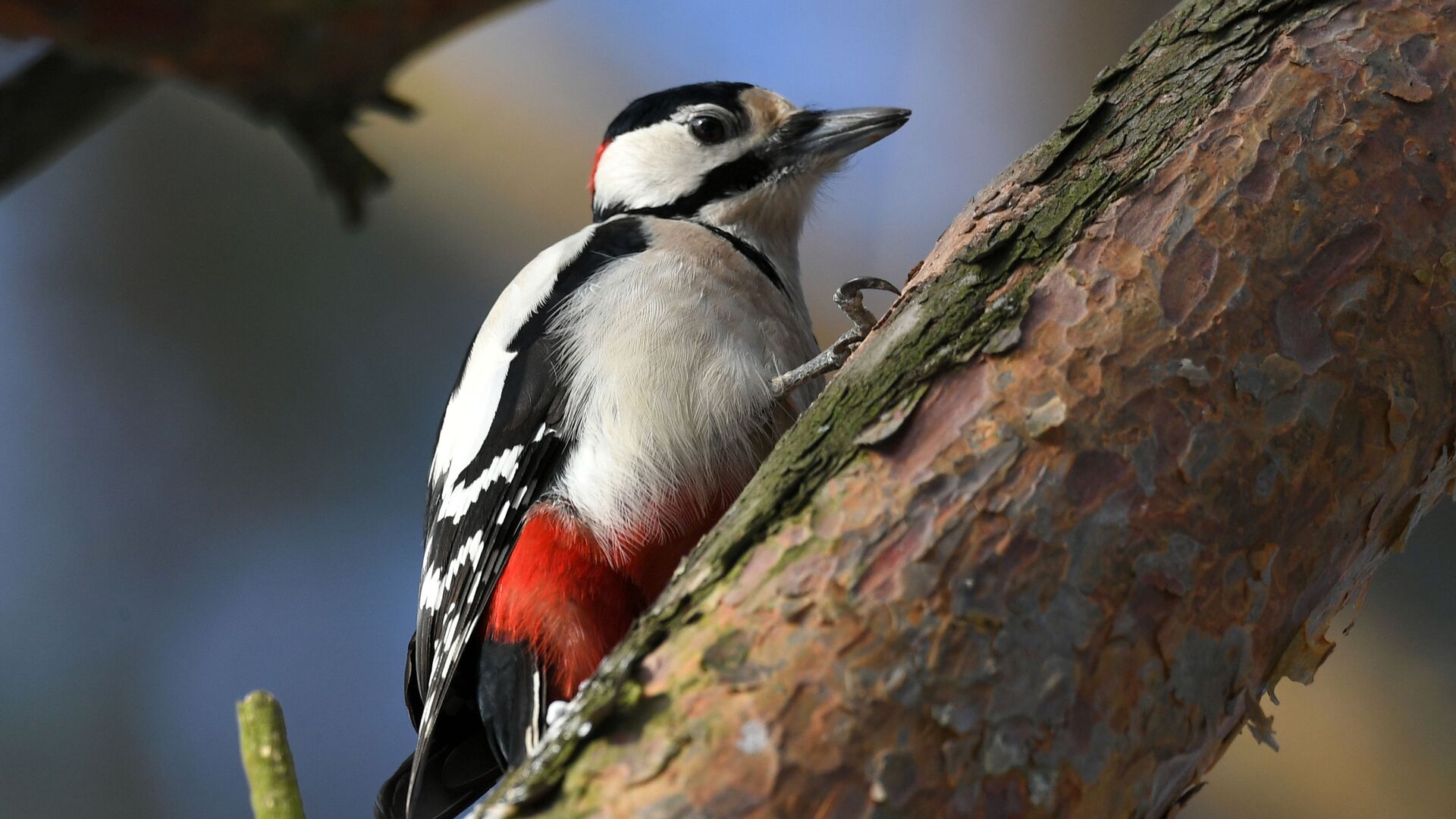https://sputnikglobe.com/20220921/woodpeckers-have-brain-areas-controlling-their-ability-to-drum-study-says-1101046716.html
Woodpeckers Have Brain Areas Controlling Their Ability to Drum, Study Says
Woodpeckers Have Brain Areas Controlling Their Ability to Drum, Study Says
Sputnik International
According to researchers, the ability to rhythmically peck has evolved in the woodpeckers just like vocal learning. 21.09.2022, Sputnik International
2022-09-21T12:18+0000
2022-09-21T12:18+0000
2022-09-21T12:18+0000
science & tech
birds
nature
https://cdn1.img.sputnikglobe.com/img/107602/62/1076026235_0:92:3317:1958_1920x0_80_0_0_79487c0e29d61684853a1e5fc8a5a74b.jpg
Woodpeckers learn how to drum their beaks the same way songbirds learn how to sing a tune, according to research published by a group of scholars at Brown University. The researchers claim the bird's forebrain contains specialized pecking regions - and those areas resemble parts of the brain associated with birdsong and human language. Woodpeckers slam their beaks into trunks and create cavities so that they can catch their primary food - insects - with their long tongues; however, their also use the noise defend their territories, scaring off potential intruders.The scientists took notice of the parvalbumin marker gene (PV), which is associated with language learning in humans, as the process requires complex muscle coordination. They were trying to find it in birds that have no vocalization abilities.According to the study, the researchers played drumming sounds through speakers near nesting cavities in the wild and then examined the forebrains of the woodpeckers that drummed in response to the sound, discovering that the drum triggered activity in the PV brain regions.
Sputnik International
feedback@sputniknews.com
+74956456601
MIA „Rossiya Segodnya“
2022
Evgeny Mikhaylov
https://cdn1.img.sputnikglobe.com/img/07e4/09/07/1080390164_0:0:1440:1440_100x100_80_0_0_46c187f2ab0908f86849a7d09a7def57.jpg
Evgeny Mikhaylov
https://cdn1.img.sputnikglobe.com/img/07e4/09/07/1080390164_0:0:1440:1440_100x100_80_0_0_46c187f2ab0908f86849a7d09a7def57.jpg
News
en_EN
Sputnik International
feedback@sputniknews.com
+74956456601
MIA „Rossiya Segodnya“
Sputnik International
feedback@sputniknews.com
+74956456601
MIA „Rossiya Segodnya“
Evgeny Mikhaylov
https://cdn1.img.sputnikglobe.com/img/07e4/09/07/1080390164_0:0:1440:1440_100x100_80_0_0_46c187f2ab0908f86849a7d09a7def57.jpg
science & tech, birds, nature
science & tech, birds, nature
Woodpeckers Have Brain Areas Controlling Their Ability to Drum, Study Says
According to researchers, the ability to rhythmically peck has evolved in the woodpeckers just like vocal learning.
Woodpeckers learn how to drum their beaks the same way songbirds learn how to sing a tune, according to research published by a group of scholars at Brown University. The researchers claim the
bird's forebrain contains specialized pecking regions - and those areas resemble parts of the brain associated with birdsong and human language.
"Woodpeckers have a set of specialized brain areas that control their ability to drum, or rapidly hammer their bill on trees, and gutters, during fights with other birds... Furthermore, these brain areas look remarkably similar to the parts of the brain in songbirds that help these animals learn to sing," the lead author, Professor Matthew Fuxjager said.
Woodpeckers slam their beaks into trunks and create cavities so that they can catch their primary food - insects - with their long tongues; however, their also use the noise defend their territories, scaring off potential intruders.
The scientists took notice of the parvalbumin marker gene (PV), which is associated with language learning in humans, as the process requires complex muscle coordination. They were trying to find it in birds that have no vocalization abilities.
According to the study, the researchers played drumming sounds through speakers near nesting cavities in the wild and then examined the forebrains of the woodpeckers that drummed in response to the sound, discovering that the drum triggered activity in the PV brain regions.


